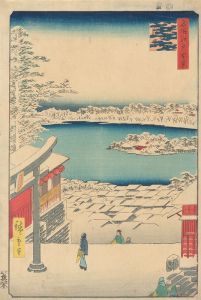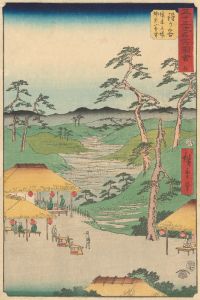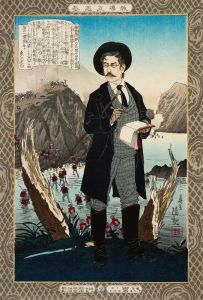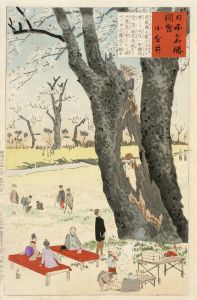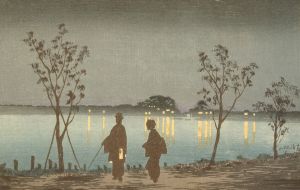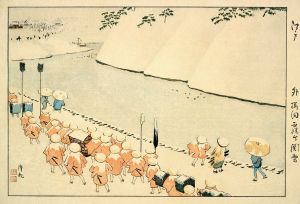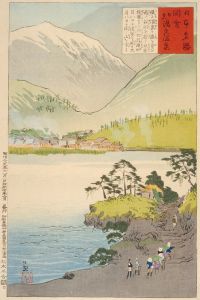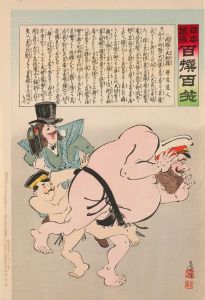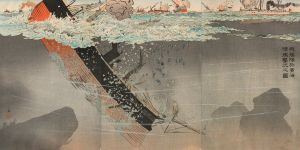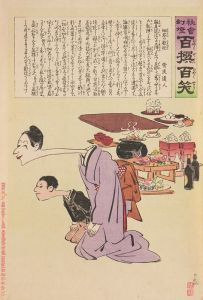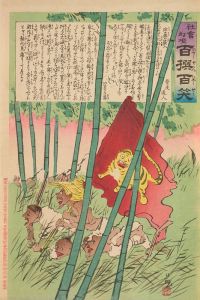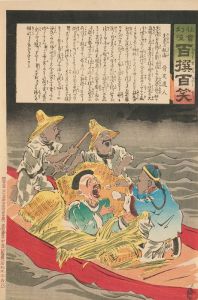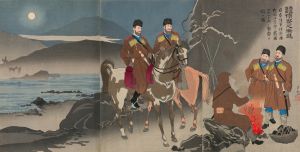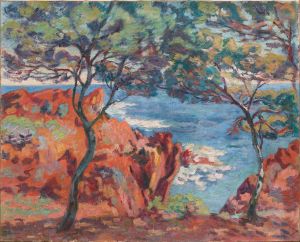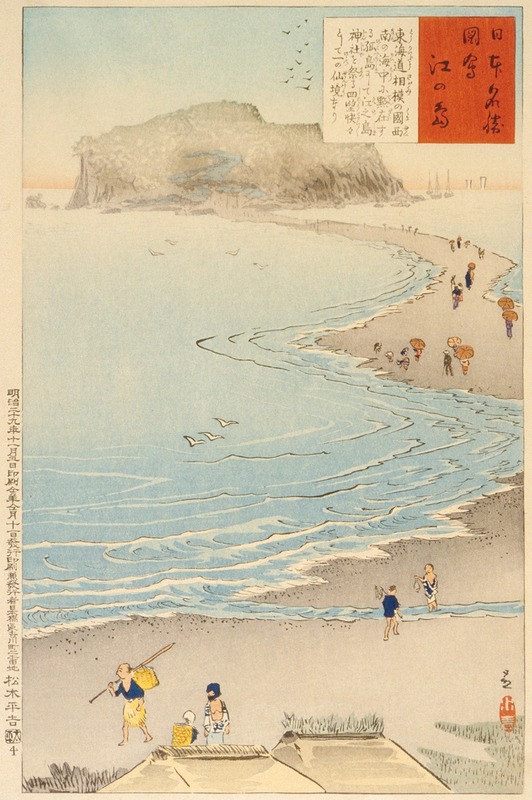
The Island Enoshima
A hand-painted replica of Kobayashi Kiyochika’s masterpiece The Island Enoshima, meticulously crafted by professional artists to capture the true essence of the original. Each piece is created with museum-quality canvas and rare mineral pigments, carefully painted by experienced artists with delicate brushstrokes and rich, layered colors to perfectly recreate the texture of the original artwork. Unlike machine-printed reproductions, this hand-painted version brings the painting to life, infused with the artist’s emotions and skill in every stroke. Whether for personal collection or home decoration, it instantly elevates the artistic atmosphere of any space.
Kobayashi Kiyochika (1847–1915) was a prominent Japanese ukiyo-e artist known for his innovative approach to woodblock prints, particularly during the Meiji era. His works often depicted the rapid modernization of Japan and the influence of Western technology and culture. One of his notable works is "The Island Enoshima," which captures the scenic beauty of Enoshima, a small island located off the coast of Kanagawa Prefecture, Japan.
Enoshima is a popular tourist destination known for its picturesque landscapes, historical sites, and cultural significance. It is connected to the mainland by a bridge and is famous for its shrines, caves, and stunning views of Mount Fuji on clear days. The island has been a subject of artistic inspiration for many Japanese artists over the centuries.
Kiyochika's depiction of Enoshima is part of his broader body of work that reflects the transition of Japan during the Meiji Restoration, a period marked by significant political, social, and economic changes as Japan opened up to the Western world. His art is characterized by a unique blend of traditional Japanese aesthetics and Western techniques, such as the use of perspective and shading, which were relatively new to Japanese art at the time.
"The Island Enoshima" showcases Kiyochika's skill in capturing light and atmosphere, a hallmark of his style. He was particularly adept at rendering scenes at dawn or dusk, using subtle gradations of color to convey the mood and time of day. This technique is evident in his portrayal of Enoshima, where the interplay of light and shadow creates a dynamic and immersive scene.
Kiyochika's work is often associated with the genre of "shin-hanga," or "new prints," which sought to revitalize traditional ukiyo-e by incorporating modern elements. While Kiyochika himself was not directly part of the shin-hanga movement, his innovative approach and thematic focus on contemporary life and landscapes paved the way for later artists in this genre.
In addition to his landscapes, Kiyochika is also known for his prints depicting the Sino-Japanese and Russo-Japanese wars, as well as his satirical and humorous works. His diverse portfolio reflects the complexities of a rapidly changing Japan and his ability to adapt traditional art forms to new contexts.
Kiyochika's "The Island Enoshima" remains an important piece in the study of Meiji-era art, illustrating both the beauty of Japan's natural landscapes and the transformative impact of modernization on Japanese society. His work continues to be celebrated for its artistic innovation and historical significance, offering insight into a pivotal era in Japan's history.





